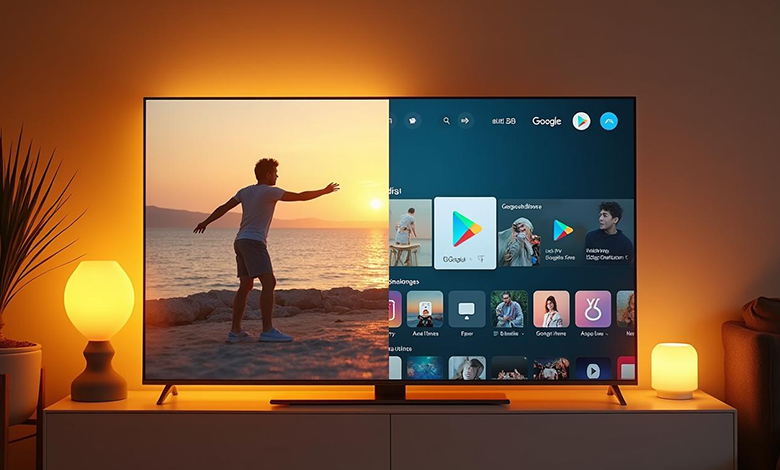Smart TV vs Android TV in Bangladesh – Which One Should You Buy?

As home entertainment becomes more in demand in Bangladesh, more and more individuals find themselves choosing between Smart TVs and Android TVs. While they may appear similar, there are underlying differences that impact features, usability, and cost. This article will inform you of the differences and allow you to choose the right one as per your needs and budget.
When one goes out to buy a television in Bangladesh, most consumers are confused between Smart TV and Android TV. Let us discuss the differences and present some useful tips in order to make the right choice.
1. Operating System
Smart TV
Contains an embedded operating system that is designed by the TV manufacturer (like LG’s WebOS or Samsung’s Tizen). It is limited to apps that are pre-installed or in their app store.
Android TV
Uses Google’s Android operating system. You can launch the Google Play Store and install an astonishing number of apps, games, and services.
Purchase Tip: If you want flexibility in apps like YouTube, Netflix, Amazon Prime, and local Bangladeshi streaming apps, Android TV is future-proof.
2. App Availability
Smart TV
Limited app choice. It may be a long time between versions, and most popular apps will not be available.
Android TV
An Android TV has plenty of app choices, such as Bangladeshi apps like BongoBD and Bioscope. Regular updates of apps are also available, so apps remain new and secure.
Purchase Tip: Consider how you will use apps. If you want more app selection or will be using IPTV or gaming apps, Android TV is the best option.
3. Voice Control and Google Integration
Smart TV
Some Smart TVs have built-in voice control options, and some don’t. But even for the ones that have it, the options are very basic and oftentimes a characteristic of one’s brand.
Android TV
They come with a pre-installed Google Assistant that allows you to control your TV through voice commands, find content, and manage smart home devices.
Purchase Tip: If you are invested in voice command and Google integration (e.g., Google Photos or smart light bulbs), go for an Android TV.
4. Updates and Customization
Smart TV
Software updates differ by manufacturer. Most standard Smart TVs receive fewer updates over the long term.
Android TV
Regular Google updates ensure fresh features and stronger security.
Purchase Tip: For a longer experience and better support, Android TV offers greater peace of mind.
5. Ease of Use and User Interface
Smart TV
Smart TVs are, in general, easier to use when compared to Android ones. Almost anybody can navigate through them after a while. Their user interfaces are also cleaner, as there are fewer options available.
Android TV
Android TVs are slightly more complex when compared to the Smart ones. It can take somebody a while to understand the functions properly. The user interface has many options, too, which can often feel overwhelming. But, the bright side to this is that Android ones can be much more personalized to individual tastes.
Purchase Tip: If you are a technology buff who enjoys customizing your interface or utilizing Google services, Android TV is the way to go. If you prefer simple navigation, a Smart TV is preferable.
6. Price and Affordability
Smart TV
They are cheaper compared to Android TVs. Since they possess minimal features and a modified OS, they’re cheap and good enough for basic use.
Android TV
Android TVs are usually slightly higher priced due to better features, like Google Play Store access, and constant updates. However, the increased price offers more flexibility and longer usability.
Purchase Tip: If you’re low on budget and your needs are basic (like viewing YouTube or cable television), a Smart TV will do. But if you need more features and better value for money in the long term, it’s worth investing in an Android TV.
Conclusion
In summary, if you prioritize ease of use and basic entertainment, a Smart TV might be sufficient. But if you’re looking for more app support, voice control, and regular updates, Android TV provides better long-term value. Always assess your needs before making the final decision.





